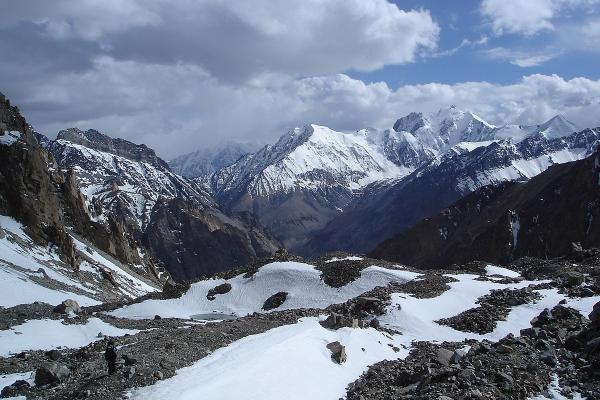UNGA approves President Rahmon’s initiative on Glacier Preservation
2025 to be International Year of Glacier Preservation
11 Jan 2023 by The Water Diplomat

On the 14th of December 2022, the UN General Assembly unanimously supported an initiative by the President of the Republic of Tajikistan, H.E. Emomali Rahmon, and adopted a resolution declaring 2025 as the International Year of Glaciers Preservation. This initiative was proposed by the President on the 3rd of March 2021 at the first High-Level Panel of the Water and Climate Coalition Leaders Meeting. The initiative was based on the understanding that this issue is crucial to the future of humankind, as glaciers are a key source of fresh water on earth.
Currently, under the influence of climate change, these vital freshwater resources are rapidly melting, endangering the water cycle and the future of our planet. The IPCC Special Report on the Ocean and Cryosphere in a Changing Climate 2019 (SROCC) reports that up to a third of the world's glaciers could disappear by the end of this century. According to the Hindu Kush Himalaya Assessment , we could lose more than two-thirds of the Himalayan glaciers by the end of this century. A similar situation is developing on the Pamir glaciers which are the main water source of the Amu Darya basin. In Tajikistan, more than 1,000 glaciers have completely melted over the past few decades.
Another severe consequence of the melting of glaciers is the formation of a large number of glacial lakes, the outburst of which causes devastating floods in the world. For example, glacial lake outbursts (GLOFs) in the Andes, the Himalayas and the Alps have killed thousands of people while causing massive damage to infrastructure.
Scientific evidence points to the fact that glaciers are melting globally at different rates with significant inter-annual variability, but in general, the amount of fresh water fed by glaciers is expected to decline dramatically by the end of the century, with detrimental consequences for society and the economy. Our current ability to predict and evaluate these changes and to accurately contribute to policy decisions remains limited.
In this regard, the initiative to declare 2025 as the International Year of Glaciers Preservation is very relevant and timely to draw the attention of the world community, especially political leaders and policymakers, to work together to identify and maintain strategies to minimize the impact of climate change on glaciers, coupled with increased capacity and the ability to better explore and control, understand and predict changes as an essential condition for adaptation.
The resolution declaring 2025 as the International Year of Glaciers Preservation also includes a number of other measures that are aimed at the successful implementation of this initiative. These include the declaration of March 21 as the International Day of Glaciers’ Preservation, the establishment of a UN Trust Fund in support of activities for glaciers’ preservation and the convening of an International Conference on Glacier’s Preservation in Dushanbe in 2025. The initiative aims to further raise the awareness of the world community on the accelerated and irreversible reduction in the world's ice reserves and its consequences. At the policy level, it will support the integration of water and climate agendas at the global level and promote the development of adaptation measures to the possible consequences of glacier melt, in particular to reduce the need for water resources and the impact of natural disasters. With improved integration of the water and climate agendas, it will be possible to integrate the understanding, reporting and predicting of changes in snow and ice conditions and their impacts at scales consistent with societal needs (e.g. water, adaptation, disaster risk reduction, etc.). At a process level this requires the mobilization of financial resources from various sources for the implementation of these actions and tasks. In addition, it will require improving international cooperation and establishing a sustainable international mechanism to facilitate and maintain access to accurate and timely information about the cryosphere on a scale commensurate with changes.
The long-term goal is to ensure that people whose lives depend on glaciers and snow, as well as those who are directly affected by the processes of the Earth's cryospheric system, receive “fit for purpose” hydrological, meteorological and climate services at levels that recognize the importance of mountain regions, as the home of the cryosphere and the source of global fresh water and ecosystem services for the world. It is expected that this will give an additional impetus to global efforts to limit and, if possible, prevent global warming through various measures and actions to protect glaciers from intense melting and disappearance.
